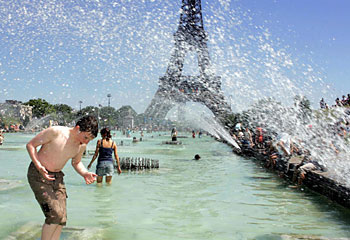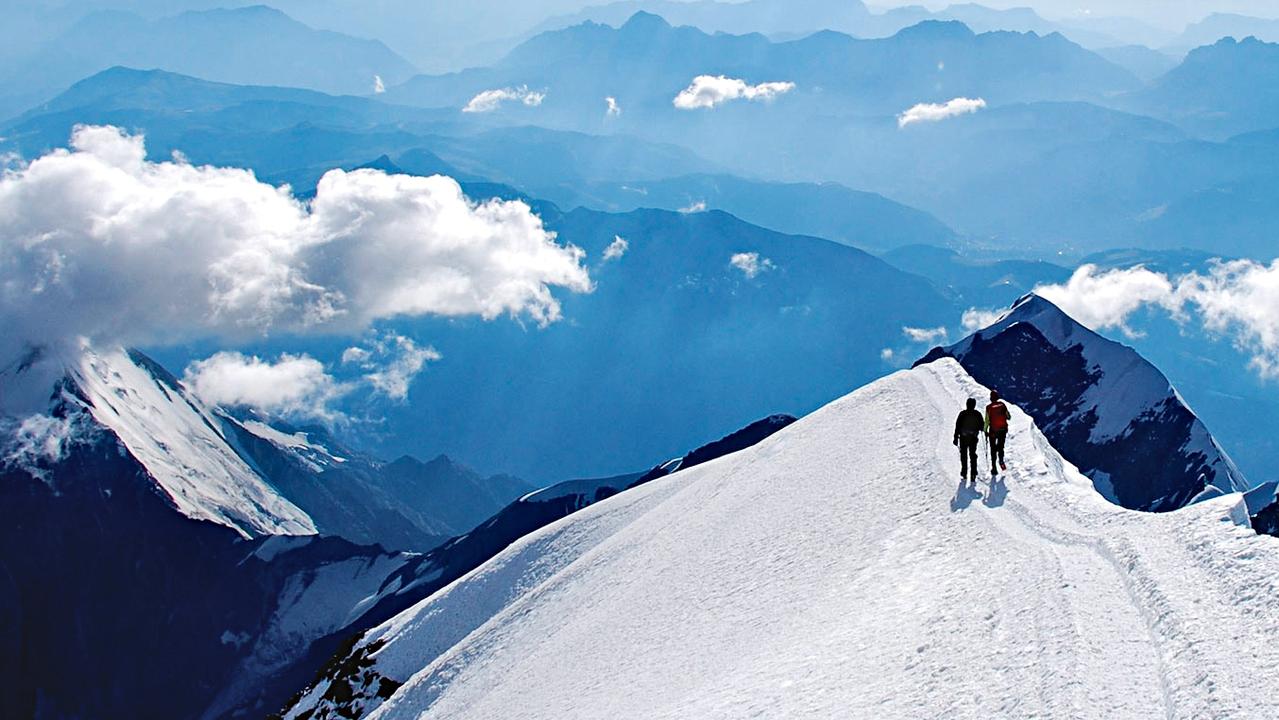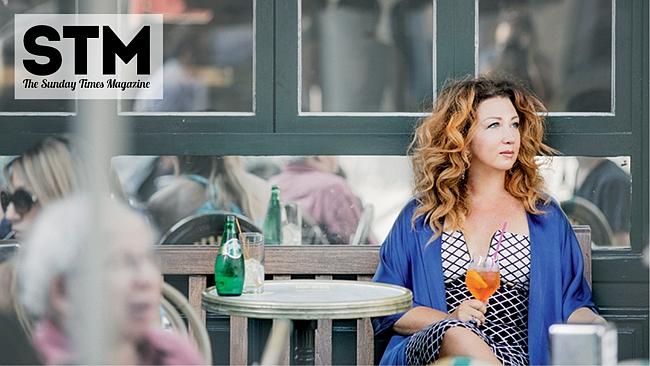Bonjour, Paris
IT'S quite possible to fall madly in love on a first trip to France, writes Jodie Minus.

'SANTE," says my sister, Natasha, raising a plastic cup of French chardonnay.
"Sante!" I reply, tapping mine against hers and committing to memory the salute I'm bound to repeat during the next week. "Now my French vocabulary consists of 17 words and phrases. I know how to count from one to 10, say bonjour, au revoir, bonsoir, s'il vous plait, merci and mon amour."
"I'm sure those last words will be useful," Natasha answers drolly.
Never say never. We are hurtling to Paris on the Eurostar train from London, having just emerged from the darkness of the Channel Tunnel into the soft light of France. The patchwork of lavender, green and hay-coloured fields outside the window looks much the same as the English farms we passed earlier. The houses are different, though. The roofs are pointier, the windows slimmer, more upright. It's très French, I think, remembering another useful word.
I am deeply thrilled about my first trip to Paris. I have a dream of the city made up of impressions from films, music and literature. Immediate thoughts turn to the Eiffel Tower shimmering above the city at night, of Anais Nin and the Left Bank literati of the 1930s, Brassai's sophisticated black and white photographs, Edith Piaf, haughty waiters, wine, baguettes and bicycles, striped maillots and wide culottes, little French schoolgirls lined up in rows, women in high heels and oversized bows.
Romantic cliches, yes, but travel in foreign cities is often painted on the previously prepared canvases we carry along with us. I think about this while gazing out of the window as the fields disappear and the buildings multiply. I feel I should lower my expectations, but we are getting close to Paris and I can't stop tapping my shoes with anticipation. The Eurostar glides into Gare du Nord and I clap my hands: voila!
Hastily grabbing our luggage, Natasha and I weave our way through the tight crowds gathered at the arrivals' gate. There is the song of French voices in the air, the scent of cigarettes and aftershave.
Natasha, in bitty French, tells the handsome taxi driver that it is my first trip to Paris and he smiles broadly and chatters away, waving his hands and pointing. Natasha nods and says: "Oui, merci," then explains to me that he will take us on the scenic route to our hotel. "Oui, oui," I nod. We head down Rue Lafayette past churches, shopfronts and Citroens, circle the Place de l'Opera, the driver pointing at buildings and saying words I can't understand. Then I gasp and my eyes widen for in front of us is the Eiffel Tower. Tall and graceful, it is a delicate silhouette against the late-afternoon summer sky. The driver sings and gestures dramatically with his hands, equally excited. We turn into the Avenue des Champs-Elysees, a grand, wide road, leading to the Arc de Triomphe. I gasp again. The driver bursts into loud, heavy laughter.
After checking into our hotel, we head straight for the Eiffel Tower. We walk past the new museum for indigenous art, the Musee du Quai Branly, the site still surrounded by scaffolding, awaiting the opening of its first big exhibition on September 18. We positively skip across the Pont de l'Alma, over the murky Seine, while I whisper the names on the signs – Cours de la Reine, Place de la Resistance, Avenue de la Bourdonnais – curling my tongue around the sensual French sounds. There are masses of people in meandering queues waiting to ascend the tower. Young gendarmes dressed in camouflage greens and oversized black berets, carrying machineguns – finger on the trigger – patrol the area with a swaggering gait. Looking up inside the tower is like peering into a richly petalled flower. Natasha joins the queue while I wander around. Children run in circles around their tired parents, men pester me to purchase their miniature plastic replicas of the tower and a colourful cart sells glaces, pink fairy floss and Eiffel Tower-shaped lollipops. Across the road in the Jardins du Trocadero, a gilded merry-go-round with white unicorns spins slowly to a carnival song.
The sun is setting when I return to my sister at the head of the queue. We squash into a large lift with dozens of people and disgorge at the second viewing area, the third being at the tip of the tower. The crowd seems to disappear as I get lost looking over the vast sprawl of city lights, a million sparkling shapes and dots against a black backdrop.
On the hour, the tower lights up like a discotheque and glancing up its golden spine gives me a moment of vertigo. We are sardined into a smaller lift and taken to the top. The viewing platform is windier, the lights below smaller. People are smoking cigarettes, and they are allowed to.
It is August, so wealthy Parisians have left town en masse for the south of France – the Cote d'Azur, St Tropez – leaving the city to hordes of American, German and Italian tourists. For Parisians unable to afford a holiday, mayor Bertrand Delanoe created the Paris Plage, an artificial beach with palm trees, deckchairs and parasols that stretches 3.5km on the Right Bank of the Seine between Pont de Sully and Pont des Arts, near the Louvre. To celebrate its fifth anniversary, there's a Left Bank addition with solarium, bookshop and permanent swimming pool on a barge that floats on the Seine.
Even though many stores are closed, Paris in August is full of joie de vivre. At Quai Saint-Bernard, students pair up for Argentinian dance classes with a Japanese instructor, tangoing until late under the evening sky. On the Left Bank, crowds of tourists disappear into the narrow, cobbled streets of the lively Latin Quarter, which resonates with the sound of plates smashing in Greek restaurants and the call of touts proclaiming their fixed-price Italian, French and Chinese menus. In the Jardin du Luxembourg to the south, elderly Parisians gather on clipped lawns to play boules, couples kiss in the sunshine, children swim in ponds and, beneath a gazebo, dozens of men of all ages gather to play chess and poker and smoke Gitanes.
One morning, the Metro, with its sweeping Hector Guimard-designed art nouveau script, calls us. It's easy to use and uncrowded, although it is noisy. Our train hisses and screeches to a stop at Barbes Rochechouart, near Montmartre, where we disembark on our way to Sacre Coeur, the white-grey domed church on a hill overlooking Paris. On the way, we ramble through the streets of Montmartre, stopping at Coquelicot Boulangerie on rue des Abbesses for bowls of coffee and croques monsieurs. Outside, a bearded musician plays a happy tune on his piano accordion.
Walking up the steep streets, I see an elderly grey-haired woman leaning out of her second-floor window, kissing and talking to the pale grey pigeons surrounding her. We come across the fruit shop that featured in Amelie, recognisable because one window is covered with pictures of French-bobbed actor Audrey Tautou and newspaper clippings about the film.
To reach Sacre Coeur, we take the funiculaire, a small cable car. The grey city sprawls beneath us, the buildings like toys. Outside the church, crowds mill about taking photographs, while inside there is an air of reverence, the sound of whispering, the flickering glow of hundreds of candles. The watery, stained-glass windows show saints, while the painted dome ceiling depicts Jesus wearing a white robe, arms open wide, surrounded by the apostles. Beneath his outstretched arms, people pray in pews and an old man sleeps in a corner.
The following day as I wander the streets of the city, Paris seems soft and hopeful. I take a photograph of the blue summer sky. Everything shimmers with golden light, even the simplest building is aesthetically pleasing. The flower shop is bursting with fragrance and colour and I can't resist three Esperance roses, their petals rich and creamy, heads as big as apples. Natasha and I disappear into the glass pyramid entrance of the Louvre to see the imposing, headless, marble Winged Victory of Samothrace, the Venus de Milo and the Mona Lisa, who smiles bemusedly at the crowds roped off around her.
From the Louvre, we crunch along the pebble paths of the immaculate, formally landscaped Jardin des Tuileries, the summer home of a carnival of merry-go-rounds, flying chairs, sideshows and a white ferris wheel that looks like a dream. We hop into one of its round white carriages and the ticket-seller spins us around as the big wheel begins turning. We go up, twirling in circles, laughing all the way. There are cries of fright from the children in the next carriage.
As the sun goes down, we run carelessly across Place de la Concorde as cars come zooming around the corner, horns beeping: the fear is invigorating. Along the riverbank, houseboats bob in the water and a fresh wind whips our hair. Soon we see the Eiffel Tower and the Pont Alexandre, the most beautiful bridge in Paris. Gold lizards, winged horses and cherubs guard the way. We run up the stairs to the bridge and find a fashion shoot taking place. There is a team of 20, generators and flash packs surrounding a blonde model in a long black dress. The swarthy photographer minces around, enjoying the attention from a crowd of onlookers. Cars pause as they encounter the scene.
I find a quiet spot on the bridge and untie my flowers. I tear the petals from one fragrant head and cast them into the Seine. They are followed by a single rose, which floats on the surface and drifts out of view. Then suddenly the sky turns on its charms, like a religious canvas: clouds gather over the dying sun while its determined rays rip through with shafts of golden light. The Eiffel Tower remains, as ever.
Sante, Paris. Mon amour.
Jodie Minus was a guest of Eurostar and the French Tourist Bureau.



